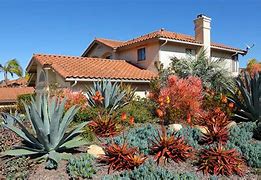The Role of Landscaping in Environmental Conservation: How Your Yard Can Make a Difference

In the face of climate change, habitat loss, and widespread biodiversity decline, environmental conservation is no longer just a global issue—it’s a backyard one. More homeowners are discovering that the way they design, maintain, and nurture their outdoor spaces can significantly impact local ecosystems and global environmental health. Landscaping, often seen purely for aesthetic value, plays a crucial role in conservation when executed with sustainability in mind.
From reducing pollution to conserving water and enhancing biodiversity, environmentally responsible landscaping is a powerful tool for positive change. Your yard, no matter how small, holds the potential to make a meaningful difference.
1. Understanding Environmental Landscaping
Environmental landscaping—also known as sustainable or eco-friendly landscaping—is a practice that considers ecological integrity while planning and maintaining outdoor spaces. It goes beyond manicured lawns and ornamental plants. Instead, it seeks to:
• Preserve native plant species
• Reduce resource consumption
• Improve soil health
• Enhance local wildlife habitats
• Minimize pollution and waste
The goal is to align your yard's ecosystem with the natural processes of the surrounding environment, making your landscape a living, contributing part of your local ecosystem rather than a burden on it.
2. The Power of Native Plants
One of the most effective ways your yard can contribute to environmental conservation is by incorporating native plants—those that naturally occur in your region. Native plants are better adapted to the local climate, soil, and wildlife, requiring less water, fewer pesticides, and no synthetic fertilizers.
They also support local biodiversity by providing food and shelter for insects, birds, and other wildlife. For example, milkweed is the sole host plant for monarch butterflies. Without milkweed, monarch populations decline.
A study by the U.S. Forest Service found that urban landscapes using native vegetation support up to 50% more native wildlife than those dominated by non-native ornamental plants (source).
Moreover, native plant gardens are often more resilient against local pests and diseases, reducing the need for chemical interventions that can pollute nearby waterways and harm beneficial insects.
3. Reducing Water Consumption
Traditional lawns are notorious for their excessive water demands. In many parts of the world, especially drought-prone areas, lawn irrigation accounts for a substantial portion of residential water use.
In the United States alone, the Environmental Protection Agency (EPA) estimates that landscape irrigation accounts for nearly one-third of all residential water use, totaling approximately 9 billion gallons per day (source). Much of this is wasted due to overwatering, evaporation, and inefficient systems.
Sustainable landscaping encourages practices that significantly reduce water usage:
• Drought-tolerant plants: These require minimal watering once established.
• Mulching: Helps retain soil moisture and reduce evaporation.
• Rain gardens: Capture and filter runoff water.
• Efficient irrigation systems: Drip irrigation delivers water directly to plant roots with minimal waste.
Not only do these practices conserve a vital resource, but they also reduce utility bills and mitigate urban water runoff—a major cause of pollution in rivers and lakes.
4. Creating Wildlife Habitat
A healthy yard can serve as a sanctuary for many species, particularly in urban and suburban areas where natural habitats are fragmented. Even small yards can become thriving ecosystems when designed thoughtfully.
To make your landscape more wildlife-friendly:
• Include a variety of plants that provide nectar, seeds, and berries year-round.
• Avoid pesticides that can harm bees, butterflies, and birds.
• Install features such as birdhouses, bat boxes, and bee hotels.
• Provide a water source like a birdbath or small pond.
Backyard habitats help support declining species and serve as critical stopovers for migratory birds. By transforming your yard into a haven for wildlife, you’re contributing directly to biodiversity conservation.
5. Soil Health and Carbon Sequestration
Healthy soil is foundational to a sustainable landscape. Poor landscaping practices—such as overuse of chemical fertilizers, excessive tilling, and compacting the soil—can degrade soil structure and reduce its ability to support plant life.
However, by incorporating composting, using organic mulches, and minimizing soil disturbance, homeowners can improve soil health and fertility naturally.
Importantly, healthy soil also sequesters carbon, acting as a natural sink that draws CO₂ from the atmosphere. Certain landscaping techniques, like incorporating deep-rooted native grasses or trees, can boost carbon storage in the soil and help combat climate change at a micro level.
6. Reducing Air and Noise Pollution
Landscaping can also help reduce air and noise pollution in urban areas. Trees and shrubs filter airborne particles and absorb pollutants like nitrogen oxides and carbon monoxide. A well-landscaped yard with trees can significantly improve the air quality around your home and neighborhood.
Additionally, vegetation acts as a natural sound buffer, dampening noise from roads and neighboring properties. This not only benefits human well-being but also creates a more peaceful and stable environment for local wildlife.
7. Sustainable Materials and Practices
Conservation landscaping isn’t just about what you plant—it’s also about how you build and maintain your yard. Choosing environmentally responsible materials and practices can further reduce your environmental footprint.
• Permeable paving: Allows water to filter into the ground, reducing runoff.
• Recycled materials: Use reclaimed wood, stone, or recycled composite materials for paths, decks, and edging.
• Manual tools: Reduce fossil fuel use by minimizing reliance on gas-powered mowers and trimmers.
• Solar lighting: Reduces electricity use and minimizes light pollution.
Every small choice adds up. Opting for sustainable landscaping materials and techniques shows a commitment to environmental stewardship.
8. Food Gardening and Self-Sufficiency
Incorporating edible plants into your landscape can also support conservation efforts. Growing your own vegetables, fruits, and herbs:
• Reduces your dependence on industrial agriculture, a major contributor to greenhouse gas emissions and water pollution.
• Cuts down on food transportation (food miles).
• Encourages composting and reduces household food waste.
Even a modest garden with tomatoes, lettuce, and herbs can make a dent in your environmental footprint while providing you with fresh, healthy food.
9. Combating Urban Heat Islands
Urban and suburban areas often experience higher temperatures than surrounding rural zones—a phenomenon known as the urban heat island effect. This is caused by the abundance of hard, heat-absorbing surfaces like concrete, asphalt, and buildings.
Green landscaping helps mitigate this by:
• Shading buildings and paved areas
• Releasing moisture through a process called evapotranspiration
• Reflecting rather than absorbing heat
Strategically planted trees and vegetation can lower local temperatures and reduce the need for air conditioning, saving energy and reducing emissions.
10. Education and Community Impact
Beyond your property line, your landscaping choices can inspire and educate others. A well-maintained, sustainable yard serves as a living demonstration of environmental stewardship.
You can multiply your impact by:
• Sharing plants or seeds with neighbors
• Starting or joining a community garden
• Hosting garden tours or workshops
• Participating in local conservation projects
When individuals make conscious landscaping decisions, it creates a ripple effect. Neighborhoods become greener, more sustainable, and more connected to the environment.
Conclusion: Start Small, Think Big
Your yard is more than just a patch of grass or a collection of decorative plants—it's an ecosystem, a sanctuary, and a tool for conservation. By adopting sustainable landscaping practices, you are not just improving your property; you’re actively contributing to a larger movement to protect the planet.
Even small changes—like planting native species, reducing lawn area, or installing a rain barrel—can make a meaningful impact when multiplied across communities.
As environmental challenges mount, the importance of individual action becomes clearer. Your yard can be part of the solution. With thoughtful design and eco-conscious choices, you can transform your landscape into a beacon of conservation, resilience, and natural beauty.
Note: IndiBlogHub features both user-submitted and editorial content. We do not verify third-party contributions. Read our Disclaimer and Privacy Policyfor details.







